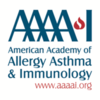Researchers identify children at risk for developing asthma by tracking their allergic patterns
Houston, TX – Researchers have been closely following children from the Cincinnati Childhood Allergy and Air Pollution Study birth cohort and believe they may be able to identify children at risk of asthma by pinpointing their childhood allergies.
“General risk factors for a child developing asthma include a parental history of asthma, gender, viral induced wheezing, and eczema. Our study adds that specific patterns of allergic sensitization can be related to asthma in early childhood. In fact, few studies have examined year-to-year patterns between asthma and lifelong allergic sensitization,” according to Jessica S. Tan, MD, MPH, and first author of the abstract.
A total of 492 children were included in this analysis and four common indoor aeroallergens were tested at ages 1, 2, 3 and 4. Skin prick testing measured sensitivity to cat, dog, dust mite and cockroach. The children were then tested at age 7 for asthmatic symptoms, using bronchodilator spirometry and/or methacholine diagnostic tools.
“We found that children with year-to-year patterns of positive allergy skin tests to cat and to house dust mite were at significantly increased risks of developing asthma by age 7,” co-author David I. Bernstein, MD, FAAAAI.
Surprisingly, other tested allergens were not associated with the development of asthma by age 7.
“More research is needed but it appears year-to-year skin prick tests may distinguish between allergic children and identify who is at the highest risk for developing asthma. We believe that the patterns of skin testing positivity over 3 years can predict who is more likely to develop asthma by age 7 for children who have family history of allergic diseases,” Tan explained.
Results from the Cincinnati Childhood Allergy and Air Pollution Study birth cohort were first presented during the American Academy of Allergy, Asthma & Immunology’s Annual Meeting on February 23, 2015. For more information on skin prick tests, asthma, allergies or the Annual Meeting please visit the AAAAI website.
###


Comments (0)